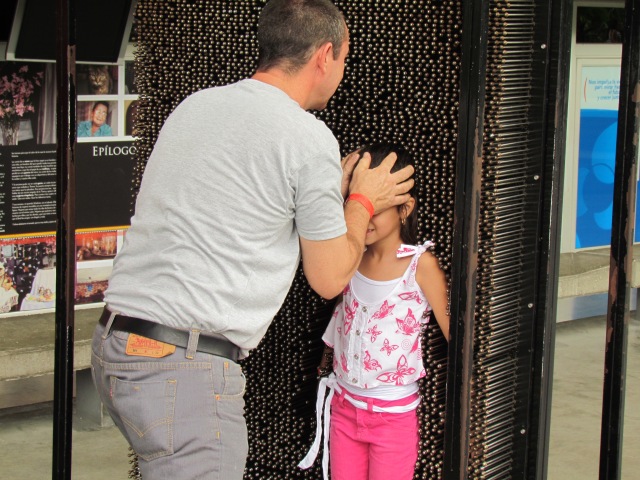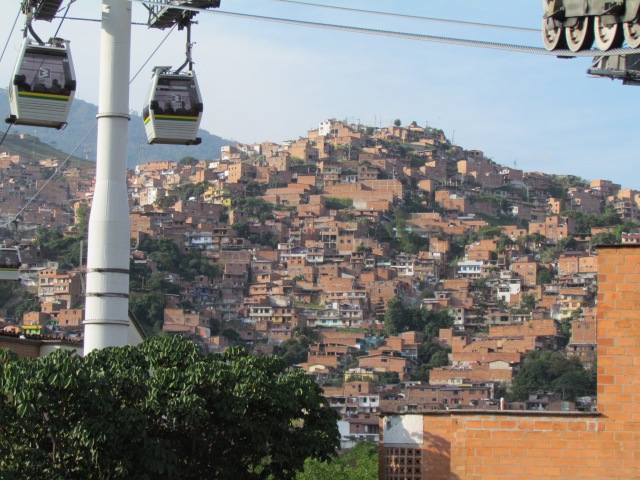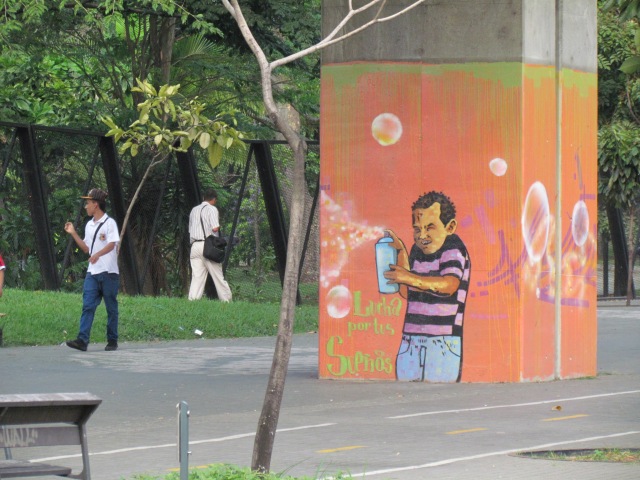Twenty years ago, Medellin, Colombia was the most dangerous city in the world. The previous sentence, to clarify, is not based on anecdote or reputation…it is an expression of statistical fact. With a homicide rate of 376 per 100,000 residents, in the late 1980s and early 90’s, Medellin had a per capita murder rate that surpassed any city on earth.
Fast forward to 2013 and Medellin was named “the most innovative city in the world” in a competition spurred by the Wall Street Journal.
I traveled to Colombia two weeks ago and was absolutely awestruck by the transformational change the city of Medellin has undergone in such a short period of time. The city continues to struggle with poverty, drug-related violence, and a slew of other issues that all large cities face. I plan on addressing some of these themes in posts to come. However, I want to begin sharing my images and impressions of Colombia by simply acknowledging that the city of Medellin has emerged as an extraordinary example of urban planning gone right. As evidenced in the photos to below, Medellin is brimming with energy, creativity, and forward-thinking social innovation. The city has asserted itself as a beacon of hope not only for the “developing world”, but for the “developed world” as well.
67. Medellin, Colombia. A fundamental element of improving public health, in any society, is to focus as much as possible on preventive as opposed to reactive care. Welcome to Sunday morning in Medellin: free public aerobic exercise classes in the park. Come one, come all.
68. Medellin, Colombia. Kids love mist!
69. Medellin, Colombia. Kids love life-size versions of manual toys!
70. Medellin, Colombia. The previous two pictures were taken at “Parque Explora” or “Explorer’s Park” in Medellin. Oh, and by the way, admission to this state of the art park and museum is free for any low-income resident of the city.
71. Medellin, Colombia. The city’s metro system was hands down the finest I have ever used, anywhere. In all relevent indicators of quality; cleanliness, security, efficiency and overall user-friendliness, the system easily outshines any metro I have used in the USA or Western Europe.
72. Medellin, Colombia. So let’s say you happen to live in a slum carved out of the mountains the outskirts of the city. You can’t exactly build subterranean train lines up there… Enter: the “Metro Cable.” This is essentially a series of massive ski-lifts that connect people who live in the most geographically challenging sections of the city with the city’s center. What might previously have been a two-hour walk to work is now a 15 minute cable ride.
73. Medellin, Colombia. View of the city from the apex of the Metro Cable. The simplicity and the logic behind the construction of such a system is painfully obvious for any progressive society. Given limited resources, put the brunt of public investment in areas of the city where the need is the highest. This seems to be the near opposite of how we manage public investment in the United States.
74. Medellin, Colombia. Public service announcement: “There is a very fine line between legal and illegal…which side are you on?”
75. Medellin, Colombia. Positive, thought-provoking graffiti abounds. “Fight for your dreams.”
76. Medellin, Colombia. “I Love You, Medellin.”
77. Medellin, Colombia. Blending modern art and positive social messaging with the epic natural beauty of a truly phenomenal city. Te quiero Medellin!












